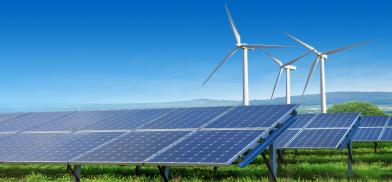Empowering Bangladesh: The promise of solar-wind hybrid renewable energy systems
Bangladesh's energy woes demand innovative solutions, and the integration of solar and wind energies in a hybrid system represents a groundbreaking approach to meeting the nation's power needs.

Bangladesh's surging energy requirements, coupled with incessant power cuts, demand innovative solutions. With over 40 per cent of the population lacking access to electricity, the urgency for alternative energy sources cannot be overstated. Presently, the country heavily relies on fossil fuels, a practice that not only contributes to escalating greenhouse gas emissions but also makes the energy landscape susceptible to price fluctuations and supply disruptions.
Coastal areas offer a wealth of renewable energy potential, with Patenga, a sea beach of the Bay of Bengal, located 14 km south of the port city of Chattogram, emerging as a particularly promising location. Here, both solar radiation and wind speed align favorably for electricity generation. The region boasts an average wind speed ranging from 3.8 to 4.55 meters per second, rendering it an ideal candidate for wind energy harnessing. Additionally, the daily sunshine duration and radiation levels are ample for efficient solar energy production.
Hybrid system: A game changer
The integration of solar and wind energies in a hybrid system proves to be a pivotal strategy. This approach ensures a consistent and reliable power supply, effectively addressing the intermittent nature of individual energy sources. The study recommends a hybrid system consisting of a 54 kW photovoltaic (PV) array, 17 wind turbines (each with a capacity of 10 kW), a 40 kW converter, and 290 twelve-volt batteries. This configuration offers an economically viable solution with a net present cost (NPC) of $642,262 and a cost per unit energy (COE) of $0.56.
Sensitivity analysis showcases the potential for further cost optimization. By varying the capital costs of PV panels and wind turbines, the study reveals that even a modest 20% reduction in installation costs can lead to a significant reduction in the COE. This underscores the importance of cost efficiencies in enhancing the economic viability of the hybrid system.
Implementing the solar-wind hybrid RES not only addresses the energy deficit but also ushers in a greener future for Bangladesh. The reduction in greenhouse gas emissions by over 60 per cent compared to conventional grid electricity represents a monumental step towards environmental stewardship.
This transition to cleaner energy sources aligns with global efforts to combat climate change, positioning Bangladesh as a responsible player in the fight against environmental degradation.
Pioneering a sustainable energy frontier
The findings of this study present a compelling case for the adoption of solar-wind hybrid renewable energy systems in the coastal regions of Bangladesh. By harnessing the abundant natural resources available in these areas, this innovative solution offers an economically viable and environmentally responsible alternative to conventional energy sources. As Bangladesh strives to illuminate every corner of the nation, the coastal regions stand poised to lead the way towards a sustainable energy future.
Bangladesh's energy woes demand innovative solutions, and the integration of solar and wind energies in a hybrid system represents a groundbreaking approach to meeting the nation's power needs. By unlocking the renewable energy potential of its coastal regions, Bangladesh can not only address its energy deficit but also significantly reduce its carbon footprint. As the country takes strides toward a sustainable energy future, the implementation of solar-wind hybrid systems in places like Patenga could serve as a shining example of how environmental responsibility and economic viability can go hand in hand. It is high time for Bangladesh to pioneer this sustainable energy frontier and set an inspiring precedent for the world to follow.
(The author is an electrical engineer at LS Cable & System’s Bangladesh operations. Views are personal. He can be contacted at deenamin.eee@gmail.com.)














Post a Comment